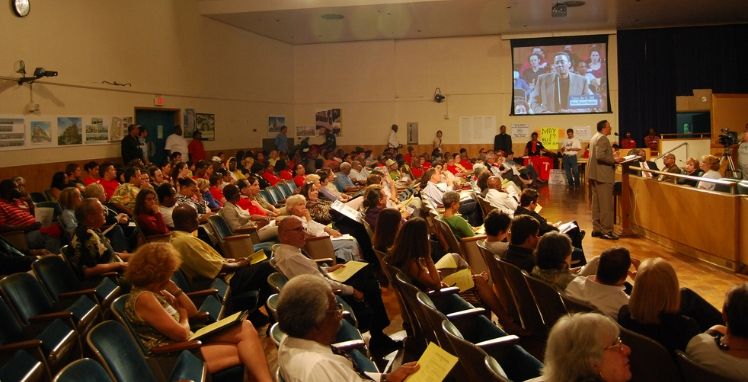Last week’s volcanic eruption in Iceland wreaked havoc on air travel to and through Europe, stranding business people, world leaders, and throngs of tourists around the globe. Though economists and politicians are still tabulating the fallout from the travel disruption, one clear beneficiary was the videoconferencing industry.
With travel not an option, CEOs and government ministers were forced to rely on virtual meeting technologies to communicate, collaborate and make decisions. As a result, the popular Internet telephony company Skype saw a significant uptick in video calls, and Cisco Systems’ high-tech telepresence centers were fully booked. It was even reported that the Prime Minister of Norway, who was stuck in New York, went about governing via his iPad.
This shining moment for videoconferencing and virtual meetings begs the question – if whole countries can be run virtually, can cities? More specifically, can the traditional public meeting be reinvented for the digital age?
Right now, most traditional public meetings are formatted as follows: for each business item on the agenda, there is generally presentation (either by staff or another party), followed by a brief period of official public comment, at which point there is usually a vote by the decision makers. For citizens to participate and have any input, they have to attend the meeting at its scheduled time and location, wait until their agenda item is taken up for discussion, and then get up to speak up for in front of a room of people for their allotted time, all in hope that what they say will make any difference in the minds of elected officials in the few minutes prior to their vote.
Virtual meetings and videoconferencing have the potential to make change this format so that is more useful for both officials and citizens. Rather than everything compressed into one meeting, the whole process could be broken up and digitized. Agenda items and their related video presentations could be posted online in advance of the actual meeting. Over a period of one or two weeks, citizens and officials could view the presentations, and then post or upload comments or questions, to which staff and officials could then respond. Other citizens who didn’t want to comment themselves could view the comments, and cast votes for which they supported. After the comment period, the public meeting could be held where a summary of the virtual public input and discussion could be presented in synthesized form to the elected officials and the public before the decision is made. The official meeting would also be broadcast online and archived for those who couldn’t attend in person.
The benefits to such a model are several. First, people have much more of an opportunity to engage on certain issues at their convenience. The public input would be more of a discussion, rather than a few minutes of prepared statement, and people could feel more certain that their participation had a chance to make a difference. In some cases, the city can also save money, since there doesn’t have to be several meetings in different locations and times.
Of course, virtual meetings aren’t without problems. One problem is verifying the identity of the participants. This can be partially addressed by asking people to register in advance to participate. More sophisticated systems would provide residents with a password or key that was mailed to their address. And while people who don’t have internet access at home wouldn’t benefit as much from such as system than those who do, they would be no worse off. They could view the presentations on computers at city hall or the local public library, and still attend the final meeting in person.
A host of cities are already posting videos of their meetings online, and a few cities are beginning to experiment with virtual open houses, including the cities of Seattle, Washington and Kalamazoo, Michigan. As comfort with these technologies increases and the processes mature, we could soon be seeing cities giving residents the chance to participate in their local city council meeting – even if they are stranded in Paris or just hoping to avoid a trip across town.
















